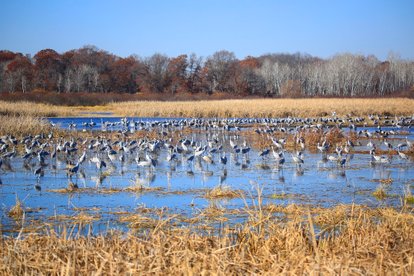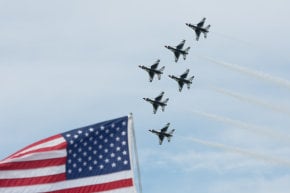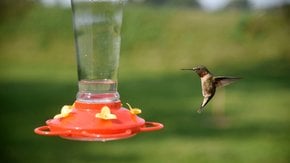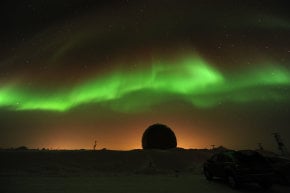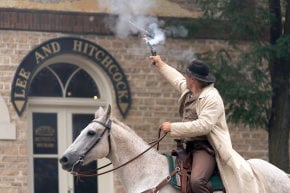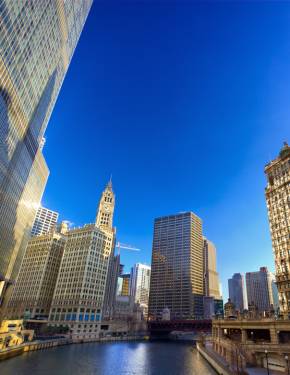Sandhill Crane Migration in Minnesota 2026
Fall is the best time to observe one of the oldest bird species on the planet
Best time: early September–mid-November
The sandhill crane, or Antigone canadensis, is one of Minnesota's largest bird species. Standing about five feet tall with a wingspread of nearly seven feet, these majestic birds have been a part of North America's landscape for approximately 10 million years. Today, sandhill cranes are once again found at multiple nesting sites throughout Minnesota, marking a successful return to the state's diverse habitats.
Migrating Season
Minnesota lies along a crucial flyway for birds that nest in Canada and Alaska. During the fall migration season, resident sandhill cranes from the eastern population are joined by migrating cranes from the mid-continent population. As a result, over 10,000 sandhill cranes gather at several key birding areas scattered across Minnesota’s forest and prairie regions. This migration takes place from early September through mid-November. In late March and early April, the cranes return to Minnesota from their wintering grounds in Florida and along the Gulf of Mexico to breed.
Where Can You See Sandhill Cranes in Minnesota?
In Minnesota, sandhill cranes are divided into two populations: the mid-continent population in the northwest and the eastern population in the central and east-central regions. The Mississippi River Flyway, a major migratory route for birds, passes through Minnesota, which is dotted with Important Bird Areas (IBAs).
Top spots to observe sandhill cranes include Sherburne National Wildlife Refuge, Carlos Avery Wildlife Management Area, Agassiz National Wildlife Refuge, and the glacial lake region in northwestern Minnesota, especially during the fall migration.
Sherburne National Wildlife Refuge
Sherburne National Wildlife Refuge is the premier destination for observing sandhill cranes in Minnesota. During the breeding season, the refuge hosts about 40 pairs of sandhill cranes, and in September and October, thousands more gather there. The 30,700-acre (12,423-hectare) refuge offers crane tours starting at sunrise, providing an unparalleled experience as thousands of cranes take off in search of food with the first light of day.
Visitors can enjoy various recreational activities during their visit, including wildlife viewing, photography, snowshoeing, cross-country skiing, hiking, canoeing, fishing, and hunting. The refuge's public use areas include the seasonal Prairie's Edge Wildlife Drive, the Mahnomen, Blue Hill, and Oak Savanna Learning Center hiking trails, as well as the St. Francis River canoe route and fishing access points. Admission is free, making it an accessible and enriching destination for nature enthusiasts.
Carlos Avery Wildlife Management Area
Carlos Avery Wildlife Management Area (WMA) is situated in northern Anoka and southern Chisago Counties in east-central Minnesota. Spanning over 20,000 acres, Carlos Avery features a diverse range of wetlands, including cattail marshes, wild rice lakes, sedge meadows, and tamarack swamps, providing ideal habitats for sandhill cranes. This area is a renowned birding site, particularly during migration seasons when large numbers of songbirds pass through.
In Carlos Avery WMA , visitors can engage in a range of activities, including hunting and fishing in accordance with state regulations, bird and wildlife watching, and hiking, cross-country skiing, and snowshoeing on both designated and non-designated trails. Additionally, foraging for fruit, seeds, and mushrooms for personal use is permitted.
Agassiz National Wildlife Refuge
At Agassiz National Wildlife Refuge, a 4-mile auto tour offers a chance to spot some of the 300 bird species that inhabit this expansive refuge, which covers 61,500 acres of coniferous bog and sedge meadows in northwest Minnesota. The refuge is particularly known for its sandhill cranes, which are visible from April 25 to May 5 and again from September 25 to October 10.
During the fall migration, Agassiz hosts approximately 100,000 ducks and 25,000 geese, as well as migrants like red-necked grebes, great blue herons, and Franklin's gulls. Keep an eye out for the resident moose, most frequently seen in September and October. Admission to the refuge is free. Visitors can take their time hiking on one or two of the three available trails or enjoy the scenic Lost Bay Habitat Drive.
Sandhill Cranes Winter Migration
During winter, sandhill cranes migrate to Florida and the Gulf of Mexico from Minnesota's forest and prairie regions for winter months. Some cranes also relocate to southern parts of the United States. These birds return to Minnesota in late March and early April from their wintering sites.
Endangered Species
Sandhill cranes were once common in western Minnesota, but their numbers declined sharply in the 19th century due to habitat loss and overhunting. By the early 20th century, only about 25 pairs of sandhill cranes remained in the state. The primary causes of their decline were habitat destruction and excessive hunting. As European settlers arrived, they drained or otherwise damaged many of the wetlands that served as crucial breeding sites for the cranes. Additionally, indiscriminate hunting during the fall migration further exacerbated the population decrease, leading to a dramatic reduction in their numbers.
Sandhill Crane Migration Map
Regardless of the season, it's always better to track Sandhill Cranes by using migration maps such as eBird.


